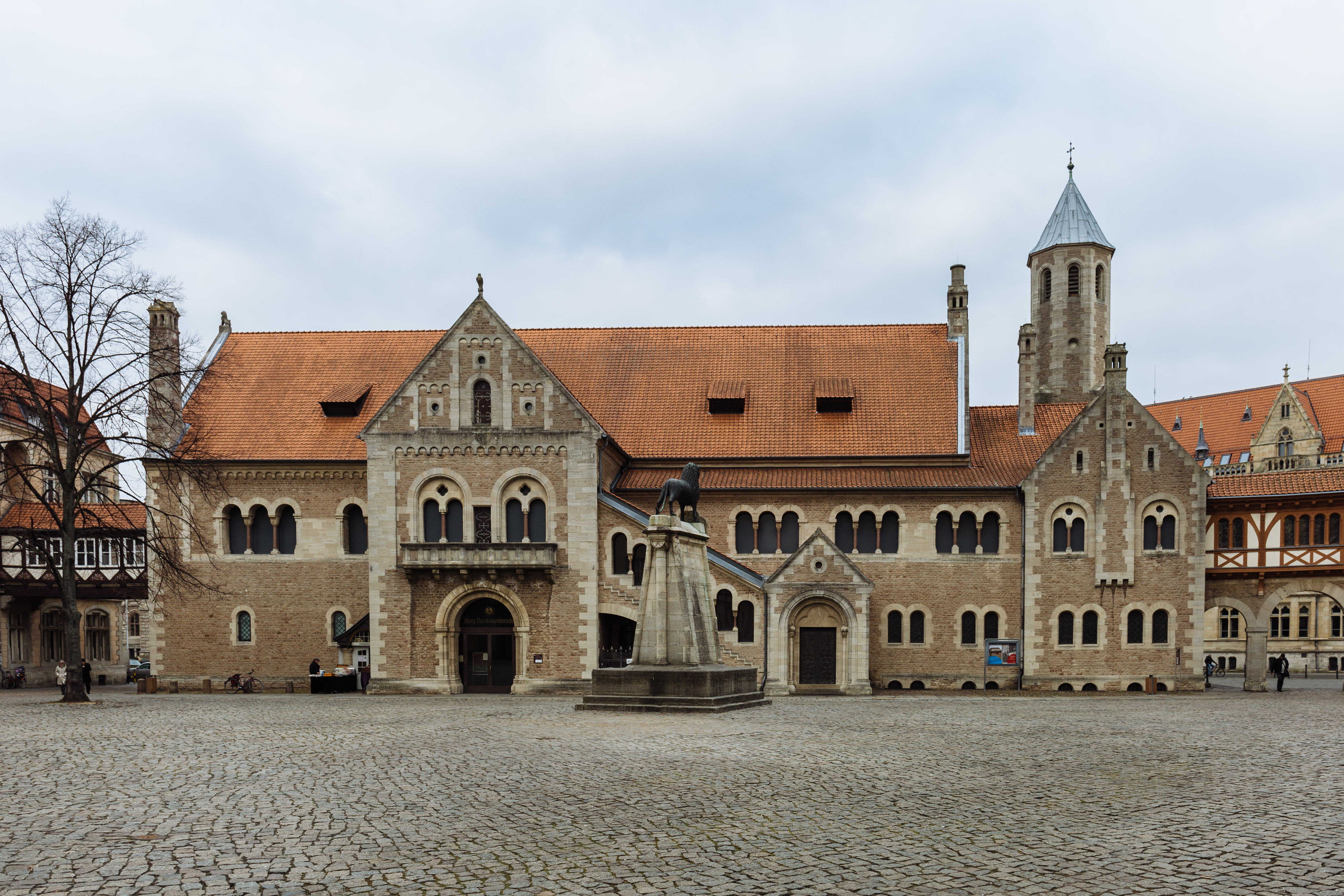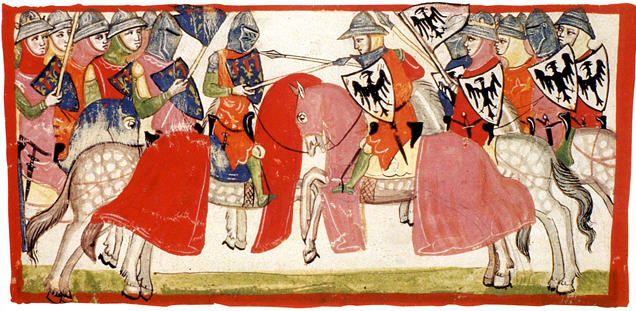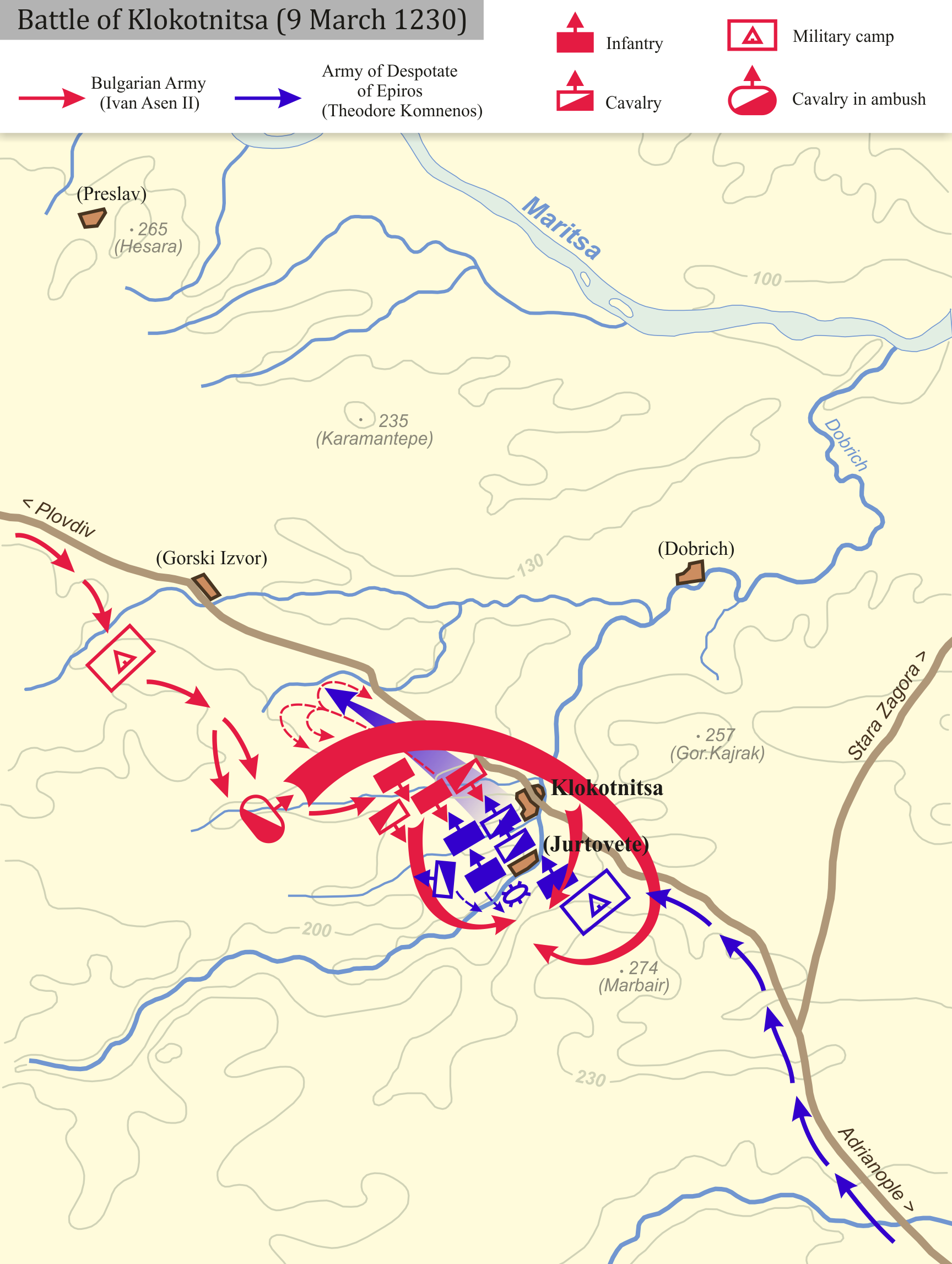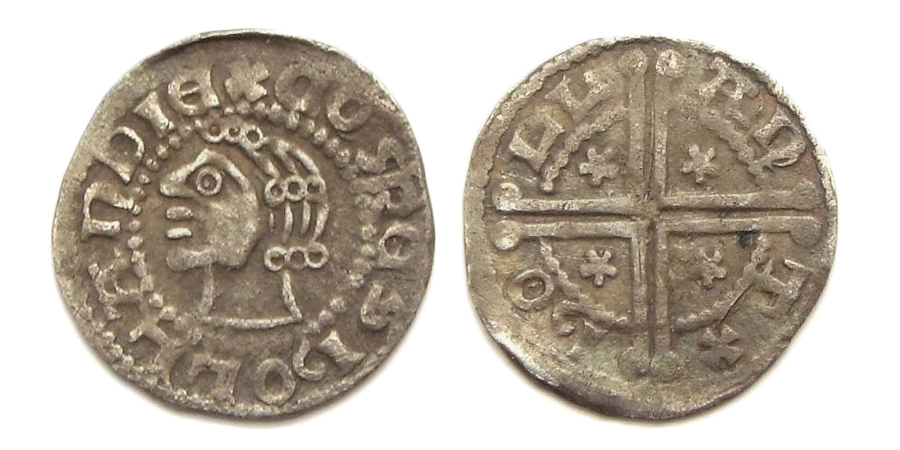|
Elisabeth Of Brunswick-Lüneburg
Elisabeth of Brunswick-Lüneburg (1230 – 27 May 1266) was Queen of the Romans, Countess of Holland, and Countess of Zeeland as the wife of William II of Holland. Biography Elisabeth of Brunswick-Lüneburg was born in 1230 to Otto I, Duke of Brunswick-Lüneburg and Matilda of Brandenburg. On 25 January 1252 she married William II of Holland, who was elected anti-king of the Germans in 1247 and crowned King of the Romans in 1248, in Brunswick. As the consort of William II, she was the Countess of Holland, Countess of Zeeland, and Queen of the Romans King of the Romans (; ) was the title used by the king of East Francia following his election by the princes from the reign of Henry II (1002–1024) onward. The title originally referred to any German king between his election and coronation .... They had two children, Floris and Machteld. Her husband died in 1256. She died on 27 May 1266 and was buried in the Middelburg Abbey church. References {{authority ... [...More Info...] [...Related Items...] OR: [Wikipedia] [Google] [Baidu] |
Countess Of Holland
Countess of Holland House of Holland (nobility), House of Holland, 875–1299 House of Avesnes, 1299–1354 House of Wittelsbach, 1354–1432 House of Valois-Burgundy, 1432–1482 House of Habsburg, 1482–1581 Titular Countess of Holland House of Habsburg, 1581–1648 {, width=95% class="wikitable" !width = "8%" , Picture !width = "10%" , Name !width = "9%" , Father !width = "10%" , Birth !width = "8%" , Marriage !width = "8%" , Became Countess !width = "10%" , Ceased to be Countess !width = "10%" , Death !width = "7%" , Count of Holland, Spouse , - , align="center", , align="center", Margaret of Austria (1584–1611), Margaret of Austria , align="center", Charles II of Austria(House of Habsburg, Habsburg) , align="center", 25 December 1584 , align="center" colspan="2", 18 April 1599 , align="center" colspan="2", 3 October 1611 , align="center", Philip III of Spain , - , align="center", , align="center", Elisabeth of France (1602� ... [...More Info...] [...Related Items...] OR: [Wikipedia] [Google] [Baidu] |
Braunschweig
Braunschweig () or Brunswick ( ; from Low German , local dialect: ) is a List of cities and towns in Germany, city in Lower Saxony, Germany, north of the Harz Mountains at the farthest navigable point of the river Oker, which connects it to the North Sea via the rivers Aller (Germany), Aller and Weser. In 2024, it had a population of 272,417. The Braunschweig-Wolfsburg-Salzgitter region had 1.02 million residents including the cities Wolfsburg and Salzgitter, it is the second largest urban center in Lower Saxony after Hanover. The urban agglomeration of Braunschweig had a population of 551,000 with almost 45% having a migration background, making it the most diverse urban agglomeration in the whole Niedersachsen, state. The city consists of 37.5% immigrants (approximately 102,000) with a high amount of migrants coming from other European countries, Asia and Africa. 73% of the Germans residing in Braunschweig come from different parts of the country, particularly North Rhine West ... [...More Info...] [...Related Items...] OR: [Wikipedia] [Google] [Baidu] |
Queens Of The Romans
Queens is the largest by area of the five boroughs of New York City, coextensive with Queens County, in the U.S. state of New York. Located near the western end of Long Island, it is bordered by the borough of Brooklyn and by Nassau County to its east, and shares maritime borders with the boroughs of Manhattan, the Bronx, and Staten Island, as well as with New Jersey. Queens is one of the most linguistically and ethnically diverse places in the world. With a population of 2,405,464 as of the 2020 census, Queens is the second-most populous county in New York state, behind Kings County (Brooklyn), and is therefore also the second-most populous of the five New York City boroughs. If Queens were its own city, it would be the fourth most-populous in the U.S. after the rest of New York City, Los Angeles, and Chicago. Queens is the fourth-most densely populated borough in New York City and the fourth-most densely populated U.S. county. Queens is highly diverse with approximately 47% ... [...More Info...] [...Related Items...] OR: [Wikipedia] [Google] [Baidu] |
Countesses Of Holland
Countess of Holland House of Holland (nobility), House of Holland, 875–1299 House of Avesnes, 1299–1354 House of Wittelsbach, 1354–1432 House of Valois-Burgundy, 1432–1482 House of Habsburg, 1482–1581 Titular Countess of Holland House of Habsburg, 1581–1648 {, width=95% class="wikitable" !width = "8%" , Picture !width = "10%" , Name !width = "9%" , Father !width = "10%" , Birth !width = "8%" , Marriage !width = "8%" , Became Countess !width = "10%" , Ceased to be Countess !width = "10%" , Death !width = "7%" , Count of Holland, Spouse , - , align="center", , align="center", Margaret of Austria (1584–1611), Margaret of Austria , align="center", Charles II of Austria(House of Habsburg, Habsburg) , align="center", 25 December 1584 , align="center" colspan="2", 18 April 1599 , align="center" colspan="2", 3 October 1611 , align="center", Philip III of Spain , - , align="center", , align="center", Elisabeth of France (1602� ... [...More Info...] [...Related Items...] OR: [Wikipedia] [Google] [Baidu] |
13th-century German Women
The 13th century was the century which lasted from January 1, 1201 (represented by the Roman numerals MCCI) through December 31, 1300 (MCCC) in accordance with the Julian calendar. The Mongol Empire was founded by Genghis Khan, which stretched from Eastern Asia to Eastern Europe. The conquests of Hulagu Khan and other Mongol invasions changed the course of the Muslim world, most notably the Siege of Baghdad (1258) and the destruction of the House of Wisdom. Other Muslim powers such as the Mali Empire and Delhi Sultanate conquered large parts of West Africa and the Indian subcontinent, while Buddhism witnessed a decline through the conquest led by Bakhtiyar Khilji. The earliest Islamic states in Southeast Asia formed during this century, most notably Samudera Pasai. The Kingdoms of Sukhothai and Hanthawaddy would emerge and go on to dominate their surrounding territories. Europe entered the apex of the High Middle Ages, characterized by rapid legal, cultural, and religiou ... [...More Info...] [...Related Items...] OR: [Wikipedia] [Google] [Baidu] |
1266 Deaths
Year 1266 (Roman numerals, MCCLXVI) was a common year starting on Friday of the Julian calendar. Events By place Europe * January 2 – Conquest of Murcia (1265–66), Siege of Murcia: King James I of Aragon ("the Conqueror") marches with his army from Orihuela and lays siege at Murcia on the Segura River. Skirmishes break out between the defenders and the Aragonese forces. The Muslim garrison, realizing that they are outnumbered and cut off from reinforcements, asks for terms. James offers to ask King Alfonso X of Castile ("the Wise") to restore the Murcians' legal rights (see 1244) from before the rebellion: self-government under Castilian suzerainty, freedom of worship, and preservation of lands and properties. They agree to this offer but request Alfonso's explicit agreement rather than just James' promise to ask him. James refuses to get Alfonso's agreement before the city surrenders. Finally, the Moors yield Murcia to James on January 31. Seeing his standard ... [...More Info...] [...Related Items...] OR: [Wikipedia] [Google] [Baidu] |
1230 Births
Year 1230 ( MCCXXX) was a common year starting on Tuesday of the Julian calendar. Events By place Byzantine Empire * March 9 – Battle of Klokotnitsa: Byzantine forces under Theodore Komnenos (Doukas) invade Bulgaria, breaking the peace treaty with Tsar Ivan Asen II. Theodore gathers a large army, including western mercenaries. The two armies meet near the village of Klokotnitsa. Ivan applies clever tactics and manages to surround the Byzantines. They are completely defeated, only a small force under Theodore's brother Manuel Doukas manages to escape the battlefield. Theodore is taken prisoner and is blinded. In the aftermath, Ivan quickly extends its control over most of Theodore's domains in Thrace, Macedonia and Albania. The Latin Duchy of Philippopolis and the independent principality of Alexius Slav are also captured and annexed into Bulgaria. Europe * King Alfonso IX defeats Ibn Hud al-Yamani (known as Almogàver by the Christians). This success open ... [...More Info...] [...Related Items...] OR: [Wikipedia] [Google] [Baidu] |
Middelburg Abbey
Middelburg Abbey (''The Abbey of Our Lady'') is a former Premonstratensian abbey in Middelburg, the Netherlands. At one time it was the centre of a large monastic complex.Middelburg Abdij su Info Middelburg Today parts of what survives are used for a museumHarmans, Gerard M.L. (a cura di), ''Olanda'', Dorling Kindersley, London, 2005 - Mondadori, Milano, 2003 and as offices. Located approximately 65 km (40 miles) west of , Middelburg is the principal town and regional capital of in the |
King Of The Romans
King of the Romans (; ) was the title used by the king of East Francia following his election by the princes from the reign of Henry II (1002–1024) onward. The title originally referred to any German king between his election and coronation as Holy Roman Emperor by the pope. The title was also used to designate the successor to the throne elected during the lifetime of a sitting Emperor. From the 16th century onwards, as German kings adopted the title of Emperor-elect and ceased to be crowned by the pope, the title continued to be used solely for an elected successor to the throne during his predecessor's lifetime. The actual title varied over time. During the Ottonian period, it was King of the Franks (German: ''König der Franken'', Latin: ''Rex Francorum''), from the late Salian period it was King of the Romans (German: ''König der Römer'', Lat.: ''Rex Romanorum''). In the Modern Period, the title King in Germania (German: ''König in Germanien'', Lat.: ''Germaniae R ... [...More Info...] [...Related Items...] OR: [Wikipedia] [Google] [Baidu] |
County Of Zeeland
The County of Zeeland () was a county of the Holy Roman Empire in the Low Countries and it later became one of the seven provinces of the Dutch Republic. It covered an area in the Scheldt and Meuse (river), Meuse delta roughly corresponding to the modern Dutch provinces, Dutch province of Zeeland. The County of Zeeland did not include the region of Zeelandic Flanders which was part of County of Flanders, Flanders; conversely, the modern Province of Zeeland does not include Sommelsdijk, historically part of the County of Zeeland. History Historically the area was often under the influence of its stronger neighbors, the County of Holland, the County of Hainaut and the County of Flanders. In 1012 Emperor Henry II, Holy Roman Emperor, Henry II the Saint enfeoffed the France in the Middle Ages, French count Baldwin IV, Count of Flanders, Baldwin IV of Flanders with Zeeland after which both counties were ruled in personal union, contested by northern Holland from the beginning. In 116 ... [...More Info...] [...Related Items...] OR: [Wikipedia] [Google] [Baidu] |
Anti-king
An anti-king, anti king or antiking (; ) is a would-be king who, due to succession disputes or simple political opposition, declares himself king in opposition to a reigning monarch. OED "Anti-, 2" The OED does not give "anti-king" its own entry, unlike "antipope", but includes it in a list of political "anti-" formations, such as "anti-emperor" and "anti-caesar". The earliest example of anti-king cited is from 1619 (and the next by Dr Pusey). Only the hyphenated form is cited or mentioned. The term is usually used in a European historical context where it relates to elective monarchies rather than hereditary ones. In hereditary monarchies such figures are more frequently referred to as pretenders or claimants. Anti-kings are most commonly referred to in the politics of the Holy Roman Empire, before the Golden Bull of 1356 issued by Emperor Charles IV defined the provisions of the Imperial election. Other nations with elective monarchies that produced anti-kings included Bo ... [...More Info...] [...Related Items...] OR: [Wikipedia] [Google] [Baidu] |
Floris V, Count Of Holland
Floris V (24 June 1254 – 27 June 1296) reigned as Count of Holland and Zeeland from 1256 until 1296. His life was documented in detail in the Rijmkroniek by Melis Stoke, his chronicler. He is credited with a mostly peaceful reign, modernizing administration, policies beneficial to trade, generally acting in the interests of his peasants at the expense of nobility, and reclaiming land from the sea. His dramatic murder, said by some to have been arranged by King Edward I of England and Guy, Count of Flanders, made him a hero in Holland. Early life Floris was the son of Count William II (1227–1256) and Elisabeth of Brunswick-Lüneburg. His father was slain in 1256 by Frisians when Floris was just two years old. Custody over Floris fell first to his uncle (Floris de Voogd from 1256 to 1258), then to his aunt ( Adelaide of Holland from 1258 to 1263). The fight over custody of Holland culminated in the battle of Reimerswaal on 22 January 1263, where Count Otto II of Guel ... [...More Info...] [...Related Items...] OR: [Wikipedia] [Google] [Baidu] |









